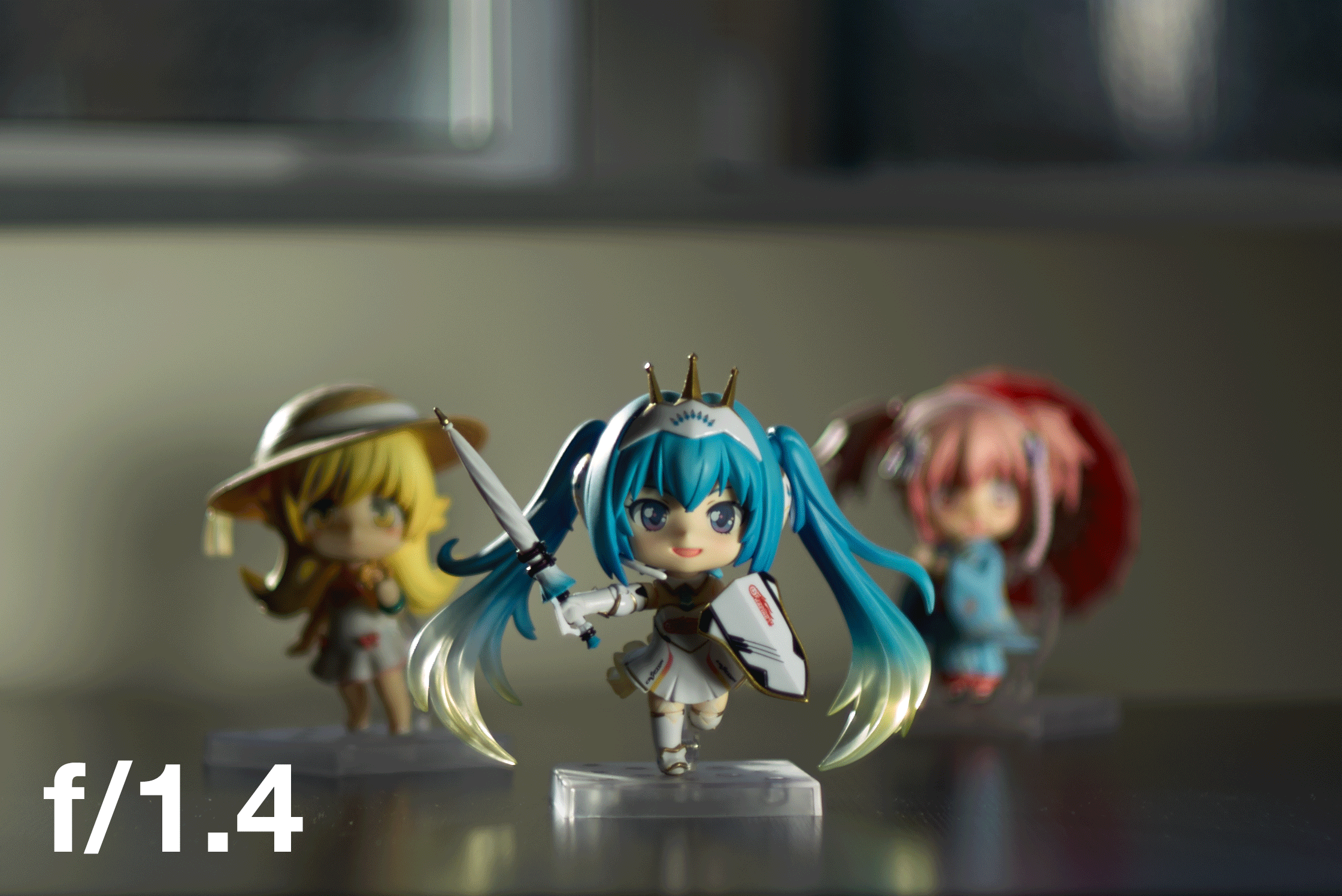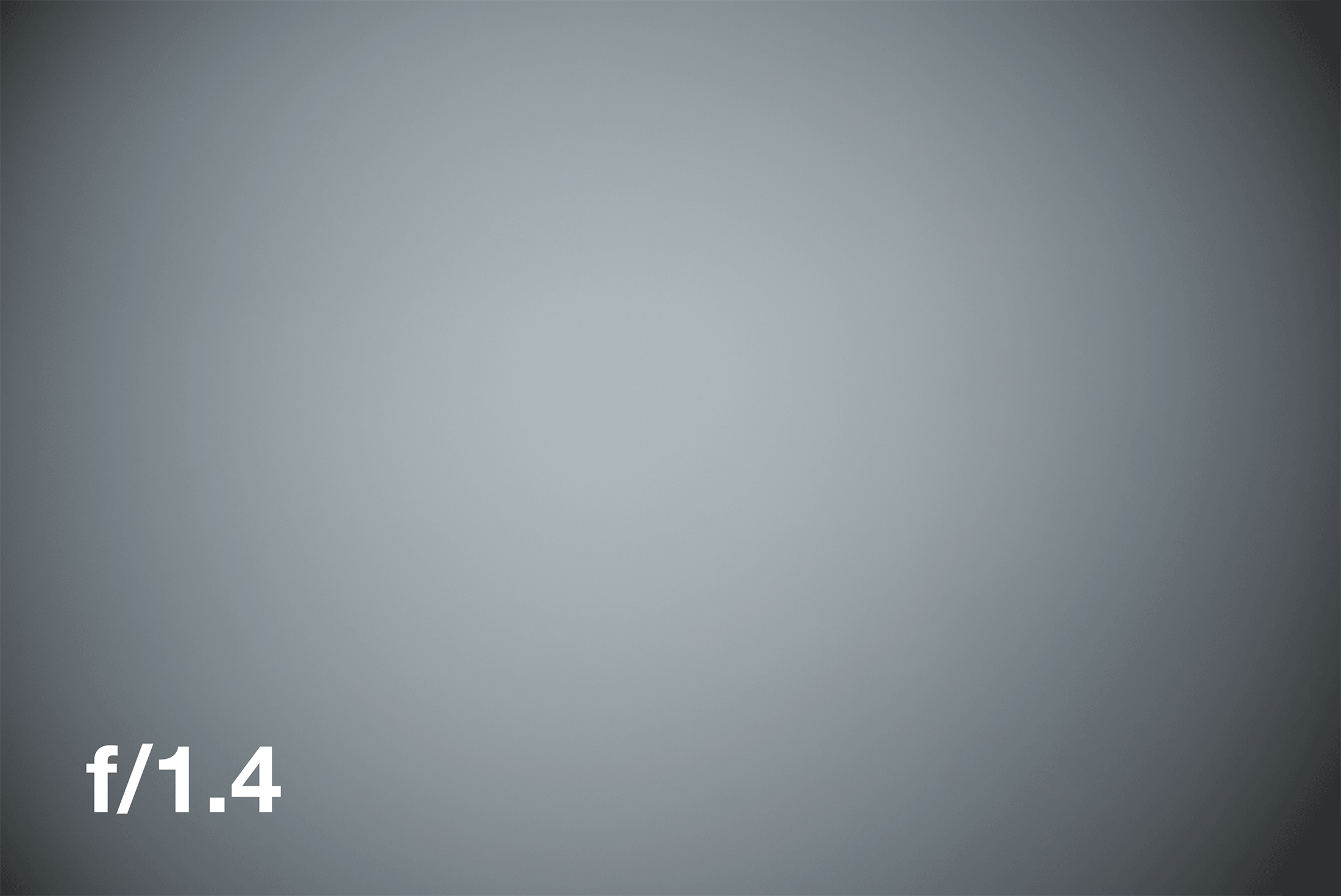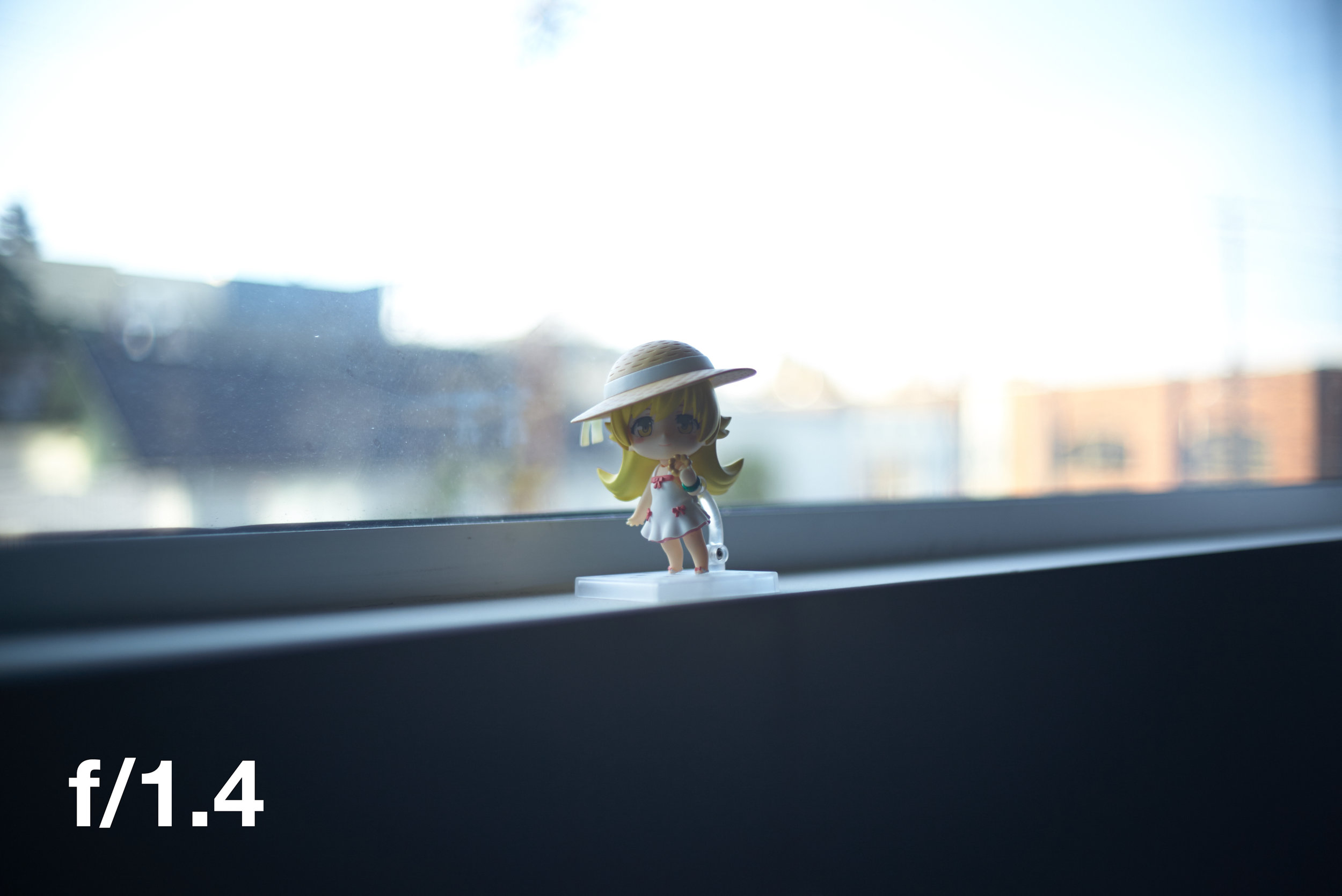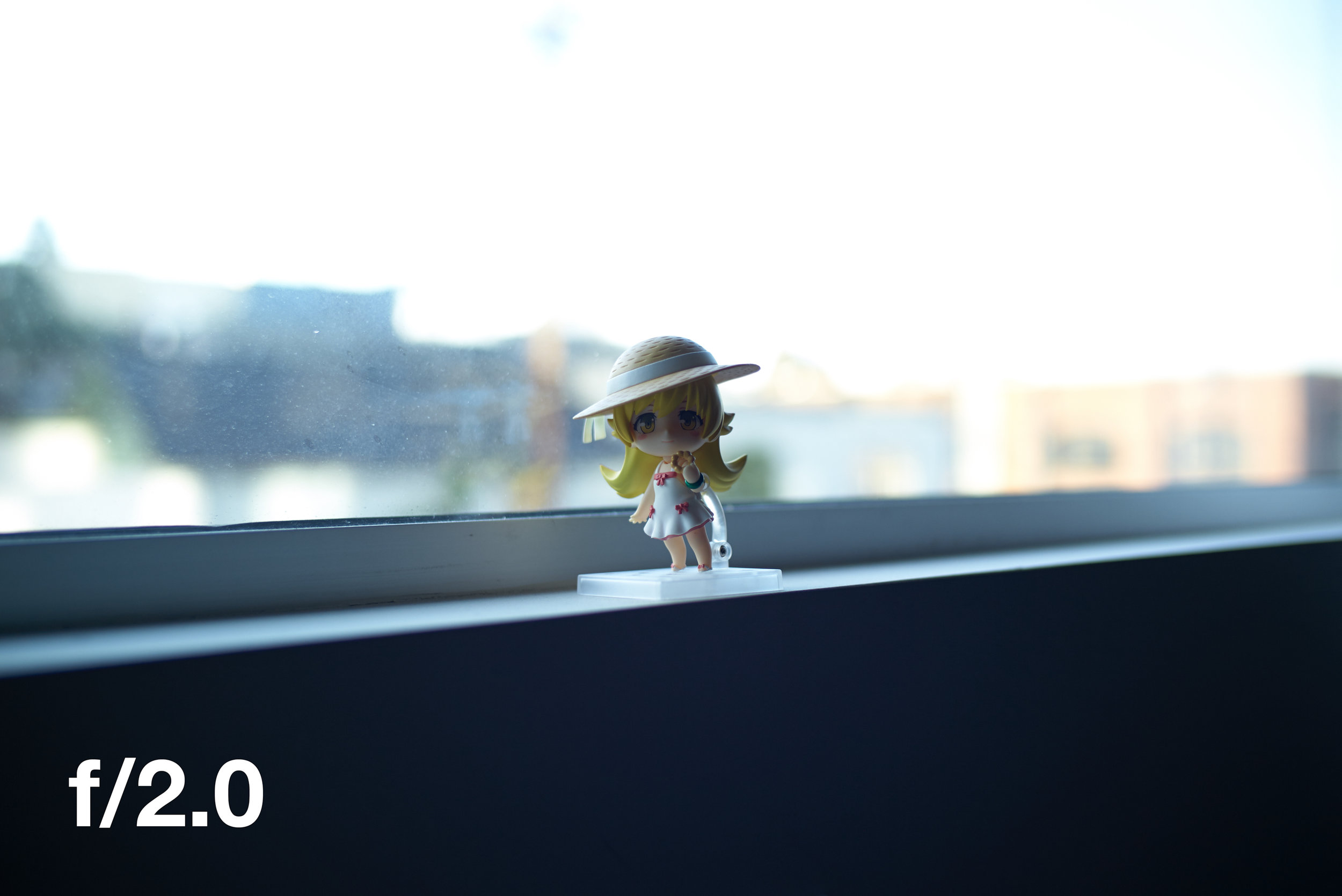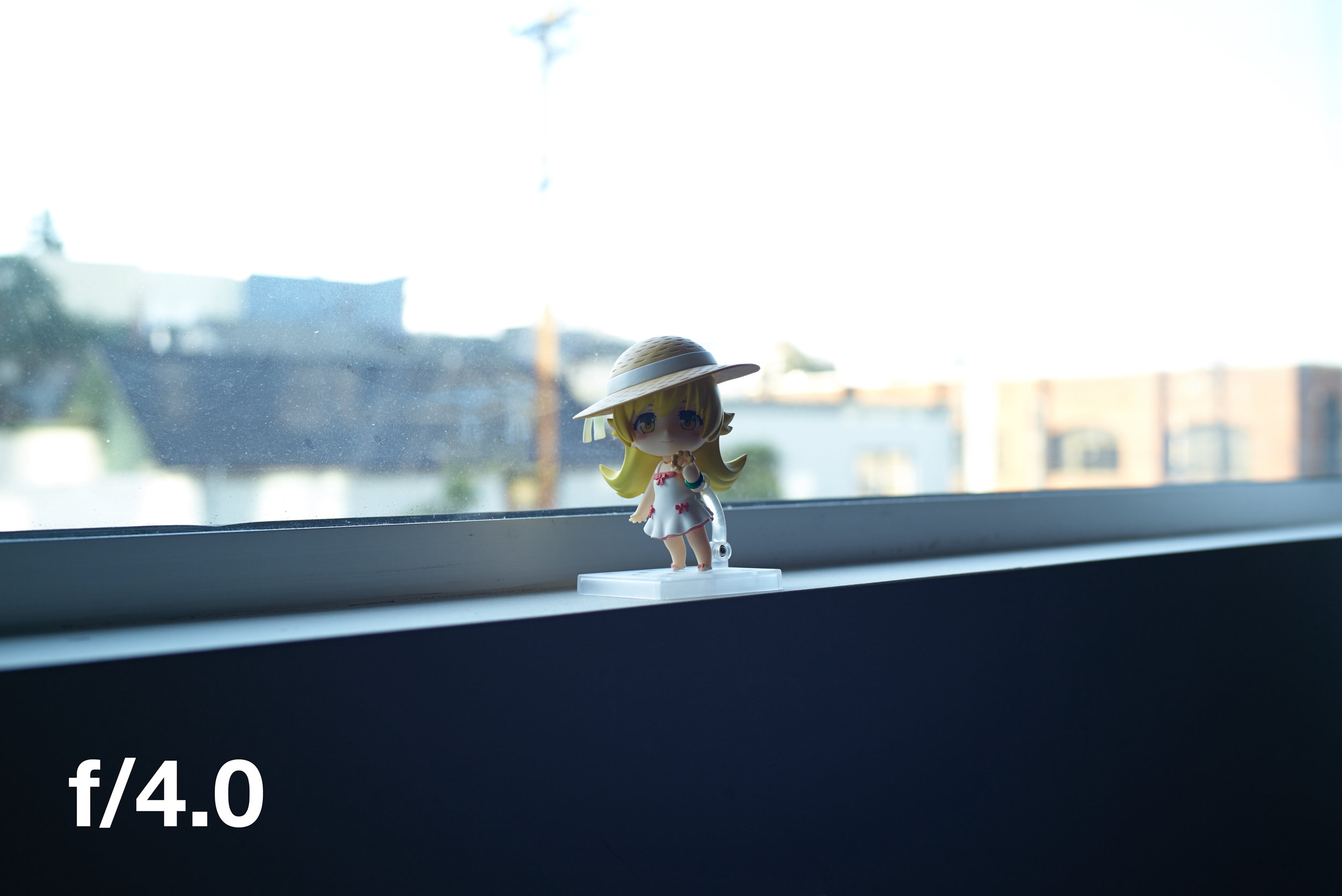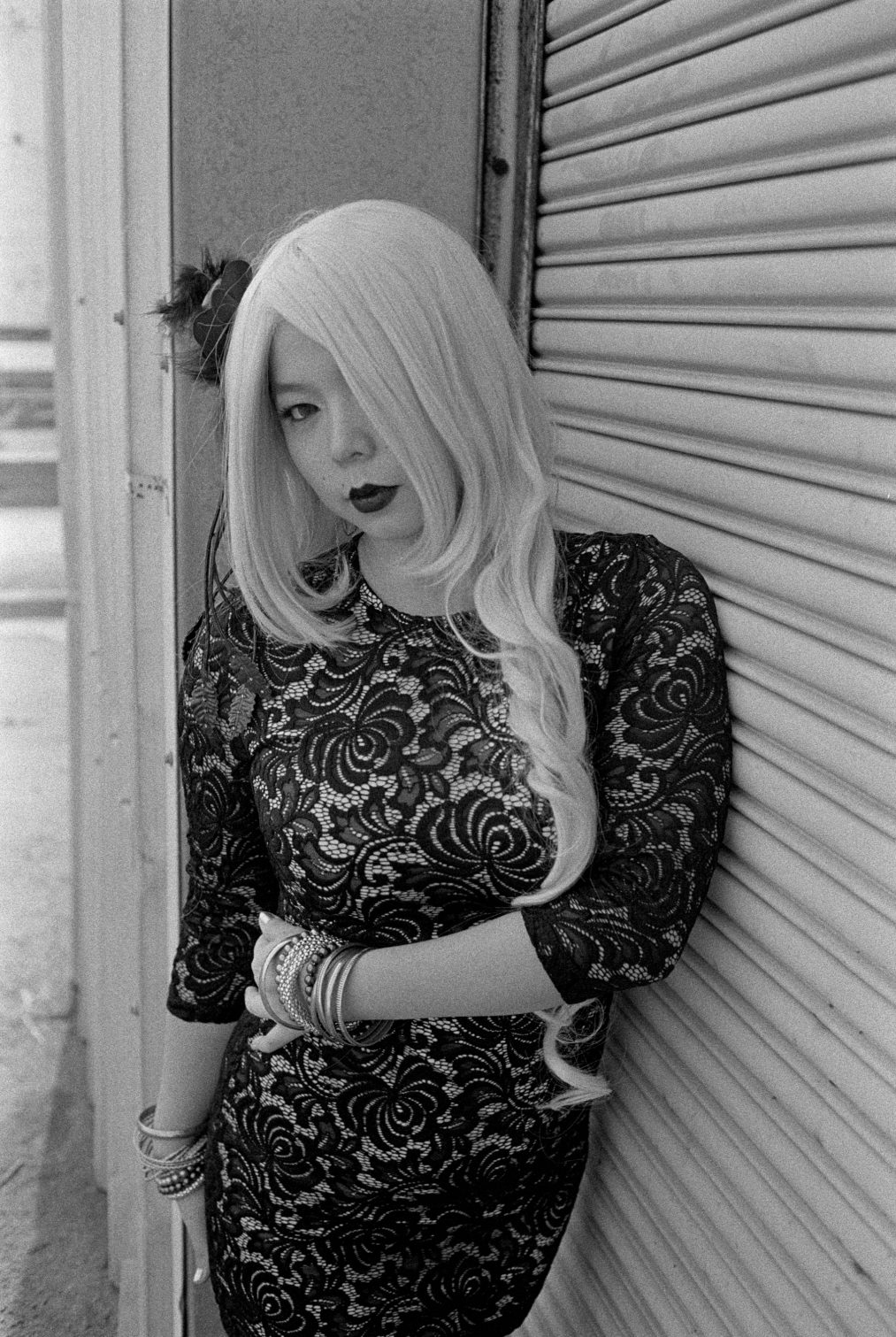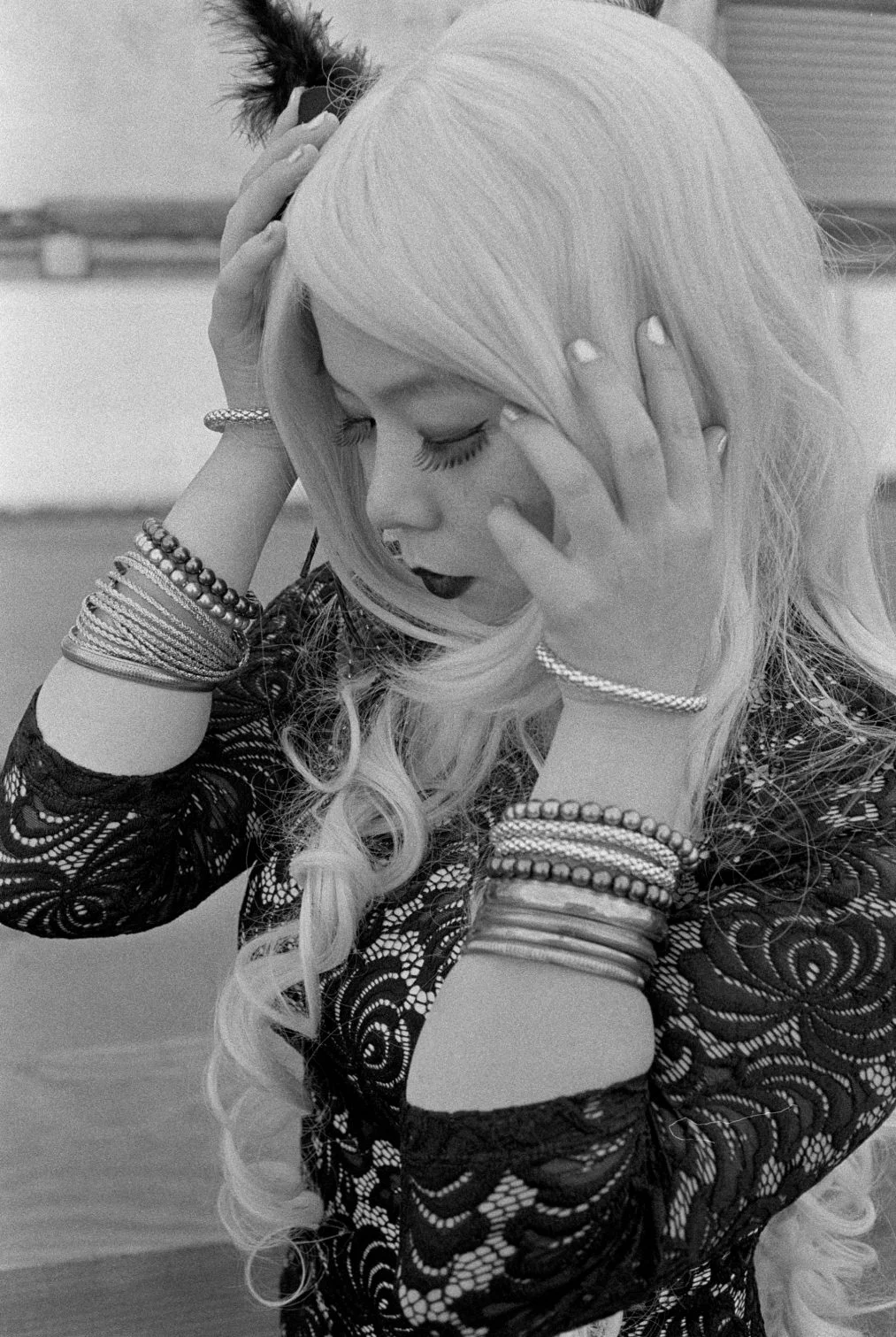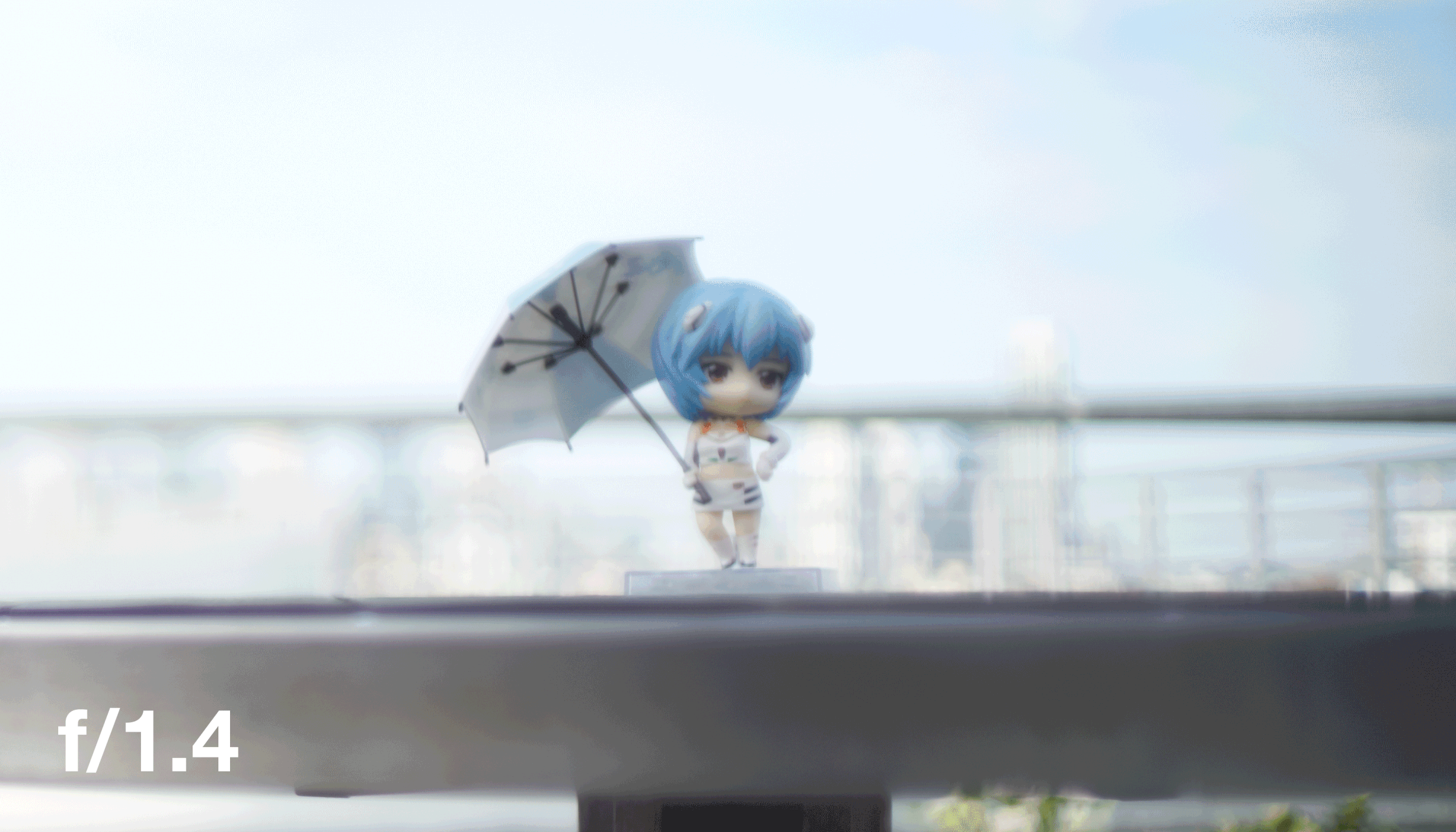The Apoqualia-G is a very special purpose lens; one that you take out with decided purpose.
Ever since I got ahold of Miyazaki-san's magical Sonnetar 50mm f/1.1 lens, I've been hooked. There's a certain magic and charm in its rendering. A beautiful softness that allows me to paint images rather than just recording a photo. Once it was announced that Miyazaki-san had created a fast 35mm lens, I just had to have it!
Filled with hope and high expectations I patiently waited for my lens to arrive.
Unfortunately, things started off pretty poorly. When I received my lens, the aperture ring was missing a screw. This caused the aperture ring to freely spin. Changing apertures was pretty much impossible unless I forcefully turned the front of the barrel. Thankfully, Bellamy over at Japan Camera Hunter was able to get my lens repaired by Miyazaki-san. And so another month of waiting ensued...
With repaired lens in hand, it was time to put it through its paces. I slapped it onto my Leica M and took some shots, and... huh. The images were certainly nice, but it was a far cry from the Sonnetar which blew my socks off. As I continued to shoot with the lens, more of its quirks kept cropping up.
These are my experiences shooting with the Apoqualia-G 35mm lens. All of the test photos were uploaded into Capture One 9 with no additional editing. Photoshop was used to generate the animated gifs, perform cropping, and to add in text. The non-test digital photos were edited using my normal workflow. Film photos were scanned using the OpticFilm 8200i film scanner and VueScan software.
For more technical information, the article written by Bellamy over at Japan Camera Hunter will cover your bases.
Focus Shift and Vignetting
One of my main concerns was whether or not the lens had any noticeable focus shift. The Sonnetar lens designed by Miyazaki-san had focus shift, but I was able to more or less compensate for it by using the coma adjustment on the rear lens element, making the aperture range from f/1.1 to f/1.7 slightly front focus. Unfortunately, there is no coma adjustment ring on the Apoqualia-G lens. So any focus shift that may be present would not be correctable.
As a test, I used my Leica M on a tripod and focused on the center Nendoroid's eyes using live view approximately 1m away. Live view was used to eliminate any rangefinder calibration problems with the camera. When changing the aperture ring, I applied enough pressure on the focus nub so that the aperture ring could be turned without affecting the barrel of the lens.
Focus shift test, 100% crop
Looking at the 100% crop animated gif, stopping down the lens doesn't appear to shift the plane of focus at a distance of 1m. Since the majority of my critical focus work occurs within the minimum focus distance to 1.5m range, the lack of perceptible focus shift is very encouraging.
Vignetting is pretty much what I expected; heavy falloff wide open with marked improvement by f/4. By f/5.6, virtually no vignetting is present.
Apoqualia-G-Vignetting
I don't personally mind the amount of vignetting, but I probably wouldn't use this lens for general street photography.
Rangefinder Coupling
According to the spec sheet, the lens is rangefinder coupled from about 0.85m to infinity. In practice, I found that around 0.6m (as indicated by the lens) is about where my coupling stops. From what I've experienced so far, the lens exhibits different behavior depending on the focus distance.
MFD - 0.8m
In this range, there is severe front focus which gradually dissipates as the distance increases to around 0.8m. Shooting at f/2 with the rangefinder at 0.6m, there is a front focus of approximately 3 inches. I've noticed that stopping down to f/8 more or less compensates for the front focus as the increased depth of field masks the problem. At f/2 focusing around 0.7m, the front focus is only approximately 1 inch. Again, stopping down compensates for the problem.
Live view is pretty much my friend in this range if shooting with the Leica M. For my film cameras I have to resort to focus bracketing, gradually leaning in and taking additional shots.
0.8m - 1.5m
This range is my bread and butter. The majority of my shots will be in this range and so I wanted to make sure that there's no surprises. I took a series of calibration shots by pre-focusing to the distance, and then moving the tripod until the rangefinder patch was lined up.
At f/1.4, focus is soft but spot on. Perhaps there's a bit of drift backwards, but that could be due to human error.
Apoqualia-G RF Calibration F14
At f/2.0, sharpness improves quite a bit, but still retains a soft rendering. Focus also appears to be within tolerance.
Apoqualia-G RF Calibration F20
At f/2.8, more improvement in sharpness. Though having looked at all three sets it looks like my lens was calibrated to have more than 2/3 of the depth of field at the back. I think for this set, I might have not gotten the Spyder Lenscal in focus at 1.2m since its way softer than the f/2.0 version.
Apoqualia-G RF Calibration F28
The takeaway from these rangefinder calibration sets is that focus is reliable enough within my target range. At this point slight movements in and out by me or my subject would be a larger cause of missing critical focus.
1.5m - ∞
Starting at 1.5m, there is a slight amount of back focus. On my copy, infinity focus is also a bit off. Nothing too terrible, but it's something to keep in mind if I ever find myself shooting in this range.
Comparison Against the Nokton 35mm Aspherical II
Upfront Miyazaki-san stated that this lens was not meant to be a technically perfect lens, but one filled with personality and character. It just so happens that I have a similar lens with its own character: the Voigtlander Nokton 35mm f/1.2 Aspherical II.
The Nokton is a lens I've used for many years, and continue to use as my go to 35mm lens for everything except street photography (it's much too big and slow for that). It too has a soft and pleasing rendering, and is quite sharp at f/2. For me the Nokton is a mix of love and hate. I love it's rendering and ergonomics. The knurled focus ring and long focus throw are perfect. However, the weight and viewfinder blockage really detract me from using it all the time.
In a way I was hoping that the Apoqualia-G would replace the Nokton. Sadly I don't believe that will be the case. As great as the Apoqualia-G lens is, it is too fiddly and some days I just don't have the patience for it. The Nokton is solid and reliable. No focus shift or focus distance issues.
However fiddly the Aproqualia-G lens is, it does have a certain draw. I was curious how it's rendering compared against the Nokton, so I took some comparison shots. Unfortunately I no longer have my Summilux-M 35mm ASPH lens to make another side-by-side comparison.
Below are a series of comparisons between the Apoqualia-G and the Nokton at the same aperture, distance, and exposure settings. The Leica M was mounted on a tripod and focused using live view using auto white balance. The subject distance was approximately 0.6m as indicated on the lens barrel. The Apoqualia-G image is on the left and the Nokton image is on the right.
A couple visible differences that I can see are:
The Apoqualia-G at the same exposure settings appears to have better light transmission than the Nokton.
The Nokton is a tad greener in rendering.
At f/1.4, the Nokton is much sharper than the Apoqualia-G and has better contrast.
Green/purple fringing is much better controlled on the Apoqualia-G than the Nokton at f/1.4.
The Nokton's out of focus areas appear creamier than the Apoqualia-G.
The lower contrast of the Apoqualia-G lens is a unique trait. Combined with its remarkable chromatic aberration control, I believe that it's best suited for film and projects where a certain amount of surrealness or dreaminess is desired.
On Film
About half of my M mount usage is on my Leica M6 TTL film cameras. There's a certain intangible quality about film photos that I just enjoy. Maybe it is the lack of absolute perfection and sharpness. Perhaps its the zen of taking my time and not knowing if I really did capture the decisive moment. But whatever it is, it still drives me to shoot film. So it's only natural for me to put the Apoqualia-G lens onto my M6 TTL and give it a go.
The first thing I notice is the dreaded double frame line sets.
Both the 35/135 and 50/75 frame lines show up
While the Apoqualia-G lens is Leica M mount, the frame selection flange is just ever so slightly off. On my digital Leica, it properly brings up the 35/135 frame lines. However on both of my Leica M6 TTL cameras, it brings up both the 35/135 and 50/75 frame lines at the same time! Sometimes I can make it stick to the 35/135 frame lines by playing with the frame line selector, but it is usually only temporary. My newer Sonnetar lens also exhibits the same problem, so I'm inclined to believe that the newer manufacturing tolerances for the flanges has gotten worse.
Flange issue aside, the Apoqualia-G lens works well on the Leica M6 TTL. In fact, it may work better than on a digital Leica since film is a bit more forgiving. Having a small f/1.4 lens again is a blessing for shooting film using available light.
Leica M6 TTL, MS-Optics Apoqualia-G 35mm f/1.4, Fuji Neopan 100 Acros @ ISO 100
All of my previous notes and comments about the lens translate into the analogue domain. There is just that certain character which shines through. More so on film than what I've seen on digital. At smaller apertures (f/2.8 and onwards), the lens rendering is more modern with not much softness left.
Leica M6 TTL, MS-Optics Apoqualia-G 35mm f/1.4, Bergger BRF400 @ ISO 400, 1+50 Rodinal developed
Leica M6 TTL, MS-Optics Apoqualia-G 35mm f/1.4, Bergger BRF400 @ ISO 400, 1+50 Rodinal developed
Adapted on the Sony A7RII
Being a Leica M mount lens, the Apoqualia-G can be readily adapted to the Sony A7RII without issue. Having an EVF greatly mitigates many of the problems that I have described in earlier sections. Combined with the Voigtlander close focus adapter (or any helicoid adapter), the lens can focus about 10 inches away from a subject. I wouldn't call this a macro lens by any means, but it's nice to have that kind of flexibility.
Sony A7RII, Apoqualia-G 35mm f/1.4 lens on Voigtlander Close Focus adapter at minimum focus distance
I won't go into corner sharpness or flatness of field on the lens on the A7RII because I generally don't care too much about those aspects. However I will note that there is a softness when focusing on the intersection points of the rule of thirds grid that doesn't go away until you stop down to f/4. It's a bit unfortunate since I do use those intersection points quite regularly, but such is the nature of using adapted glass. I will say that the Apoqualia-G lens performs vastly better than the Nokton on the A7RII.
Portion of corner test crop
Extreme edge focus crop comparison, just beyond the rule of thirds intersection.
The overall rendering on the A7RII is pleasant. It's very film-like without the grain (and time spent developing and scanning). The Apoqualia-G lens will probably get much more digital camera mileage on the Sony A7RII than the Leica M for me.
Sony A7RII, MS-Optics Apoqualia-G 35mm lens Cosplayed by Kei
Quick Note on Bokeh
I didn't want to spend a lot of time on bokeh, because it's such a subjective topic and there isn't much to say. From what I've noticed, the bokeh is mostly round due to the 12-blade iris. At the periphery, bokeh is a bit lemon shaped at f/1.4, but cleans up by f/2.8. Stopping down to f/4 doesn't appears to change the out of focus areas significantly as they become more defined and clear.
Parting Thoughts
This lens is a complex set of emotions for me. Coming in with high hopes, I was expecting another "WOW!" lens. In the end I received a lens that's flawed but full of personality; a tool capable of letting me express my vision at the expense of being more exacting and patient.
Knowing what I know now, would I purchase this lens again? In all honesty, probably not.
The lenses that I keep around now either cover a focal range that I'm missing or have that special something that makes me want to shoot with the lens all the time. This lens is neither to me. The culmination of small annoyances in the usage of the lens on a Leica camera is ultimately what takes away from an otherwise interesting lens.
Who knows. Maybe 6 months from now I will have changed my mind, and sing the praises of the Apoqualia-G. In the meantime I remain tempered in enthusiasm.
Thank you for reading!
